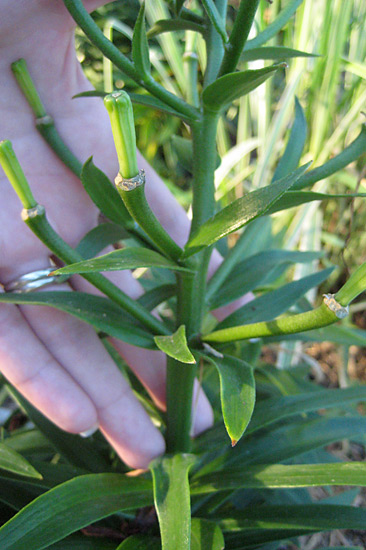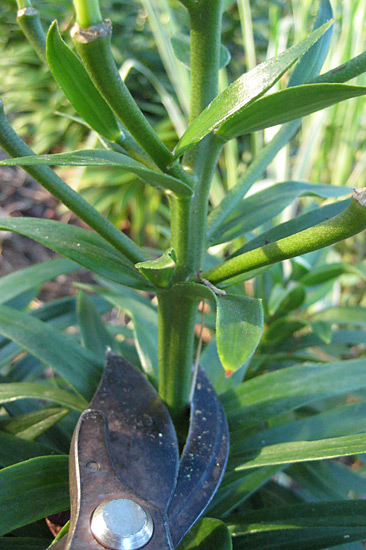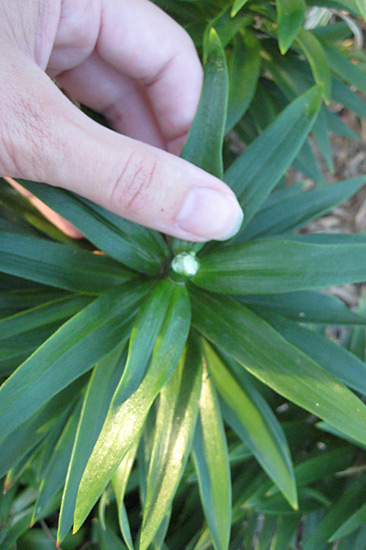Tonight some garden volunteers worked to spiff up the Grand Ideas Garden for the Michigan Garden Plant Tour taking place July 28 – August 8. The whole group of us scoured the garden, removing spent blooms and making sure the plants looked great for the upcoming visitors. Throughout the garden, many varieties of Asiatic Lilies needed deadheading. I was on such a roll with the task, I decided to do the same with the lilies in the Back Alley Bed of the Lot when I returned home.
A Lily is Not a Lily is Not a Lily
Many plants with the word “lily” in their name are not true lilies. Examples of this would be the peace lily (of the genus Spathiphyllum) or day lily (of the genus Hemerocallis). True lilies belong to the genus Lilium, such as Asiatic lilies and Oriental lilies. Both grow from fleshy, scaly bulbs.
According to the University of Minnesota Extension site, Asiatic lilies “are among the easiest to grow. They’re very hardy, need no staking, and are not particularly fussy about soil, as long as it drains well.” Asiatics love full sun, are available in various colors / heights, and bloom from around mid-June through September, depending on the cultivar.
Asiatic Lilies on the Lot
Here is a photo of the lilies in the full sun, Back Alley Bed around Bloom Day (the 15th) of this month. These lilies had been abandoned on the front porch in a pot. Since we moved in and transplanted them to the garden bed, they have happily multiplied.

When to Deadhead Asiatic Lilies
Since then the petals have faded, fallen off, and we are soon left with the plant stalk and leaves as seen in this photo.

If left alone, the lily would begin to create seed pods. Deadheading removes this part of the plant and redirects the plant’s energy into the bulb instead, creating larger nutrient stores for the following season. So, off with its head!
How to Deadhead Asiatic Lilies
With most types of Asiatic Lilies, the top part of the plant can be removed just below where the last petal stalks join the stem. One snip and its done.

The remaining plant stalk and leaves look tidier now and are left to soak up all the sun and get ready for next season.

As Fall approaches, the leaves and stalks of the Asiatic Lilies will turn brown and die back the same as tulips or daffodils do at the end of spring. After the die back, I usually clip the plant down to the ground so there is less clean up after the snow melts.